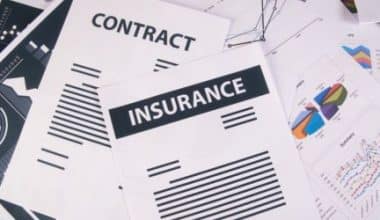Engineering is a profession built on precision, expertise, and problem-solving. Engineers have an important role in changing the world we live in, whether they are designing structures, developing breakthrough technology, or managing complex projects. However, with enormous responsibility comes the possibility of errors, miscalculations, and unforeseen circumstances, which can lead to legal challenges and financial losses. Engineer Professional Liability Insurance coverage comes into play here. In this comprehensive guide, we will delve into the importance of Engineer Professional Liability Insurance, the requirements for professional engineers, and the factors affecting insurance costs.
What is Engineer Professional Liability Insurance?
Engineer Professional Liability Insurance, commonly known as Engineer Errors and Omissions Insurance, is a type of coverage designed to protect professional engineers from liability claims originating from errors, omissions, negligence, or professional misconduct in the performance of their duties. It protects you financially from legal fees, settlements, and judgments that may be incurred as a result of such claims.
Coverage Scope
Engineer Professional Liability Insurance often covers a wide range of circumstances, including design errors, faulty specifications, construction flaws, professional negligence, project delays, and cost overruns. It may also include claims for expert advice, documentation errors, intellectual property infringement, and breach of contract. Because coverage varies according to policy conditions, engineers must carefully evaluate and comprehend the exact coverage provisions given by their insurance policy.
Importance of Coverage
Engineers face enormous risks as a result of the nature of their employment. Even the most conscientious professionals might make mistakes or face unforeseen circumstances. Engineer Professional Liability Insurance acts as a safety net, providing financial protection and peace of mind, allowing engineers to focus on their profession without continuously worrying about the legal and financial ramifications of a claim.
Mitigating Legal Costs
Legal disputes can be financially draining, regardless of their outcome. Engineer Professional Liability Insurance covers the costs of legal defense, such as attorney fees, court costs, expert witness fees, and other relevant expenses. Even if they are ultimately found not guilty, this coverage can greatly reduce the financial burden that engineers may incur when defending themselves against lawsuits.
Safeguarding Professional Reputation
In addition to financial implications, liability claims can have a significant impact on an engineer’s professional reputation. Negative publicity as a result of a claim might erode the trust and credibility that engineers have acquired over the course of their careers. Engineer Professional Liability Insurance provides resources to manage and respond to such incidents, thereby protecting engineers’ professional reputation and integrity.
Professional Engineer Insurance Requirements
- Obligations Regulatory and Contractual: Engineer Professional Liability Insurance is required by many professional engineering associations and licensing boards as a condition of professional registration or licensure. These standards are intended to guarantee that engineers maintain a high level of professional responsibility and accountability in their work.
- Client and Project Requirements: When hiring professional engineers, clients and project owners frequently include insurance requirements in contracts and agreements. These standards are meant to protect the client’s interests and prevent potential project risks. Engineer Professional Liability Insurance is not only a legislative necessity in such instances, but it is also required to secure and execute contractual responsibilities.
- Best Practices and Industry Standards: Engineer Professional Liability Insurance is in accordance with industry standards and best practices, displaying a dedication to professionalism, risk management, and client safety. By complying with these criteria, engineers increase their market credibility and competitiveness, as clients and stakeholders frequently prefer to deal with professionals who have adequate insurance coverage.
- Tailored Coverage for Specific Disciplines: Risks and challenges may differ amongst engineering specialties. Engineer Professional Liability Insurance allows engineers to tailor their coverage to their specific areas of practice. Tailored coverage ensures that the insurance meets the specific risks associated with each profession, whether it’s civil engineering, mechanical engineering, electrical engineering, or any other specialist sector.
- Continuous Coverage and Retroactive Dates: Engineers must retain continuous coverage throughout their careers because claims can arise from previous projects or services. In insurance plans, retroactive dates define coverage for claims originating from incidents that occurred prior to the policy’s commencement date. Ensuring that retroactive dates correspond to the start of an engineer’s profession aids in providing seamless coverage and avoiding potential gaps in protection.
Engineer Professional Liability Insurance Cost
Professional liability insurance for an engineering firm costs roughly $155 per month or $1,875 per year. The median number eliminates outliers and provides a more accurate depiction of typical engineering insurance costs than the average figure.
Factors Influencing the Cost of Engineer Professional Liability Insurance
- Experience and Expertise: The level of experience, knowledge, and track record of an engineer might affect insurance premiums. Experienced professionals with a track record of successful projects and a history of few claims may benefit from lower premiums than those with little experience or a history of claims.
- Project Scope and Complexity: The nature and scope of projects completed by an engineer might have an impact on insurance rates. Large-scale, high-risk projects, such as infrastructure development or complex systems engineering, may necessitate higher insurance rates due to the greater likelihood of claims and financial exposure.
- Coverage Limits and Deductibles: An engineer’s coverage limits and deductibles might affect the cost of Engineer Professional Liability Insurance. Higher coverage limits provide more financial security but may result in higher premiums. Similarly, higher deductibles result in reduced out-of-pocket spending in the event of a claim, although they are frequently accompanied by higher premium costs.
- Risk Management Practices: When establishing insurance costs, insurance providers may take into account an engineer’s risk management practices. Proactive risk mitigation methods, such as accurate documentation, extensive quality control, and the implementation of robust project management standards, can have a positive impact on insurance costs.
- Claims History: Insurance underwriters generally look at an engineer’s claims history to determine their risk profile. A history of frequent claims or large claim payouts may result in higher premiums because it suggests a greater likelihood of future claims. A clean claims history, on the other hand, can lead to lower insurance premiums.
Engineer Professional Liability Insurance Coverage Options
- Claims-Made Policies: Engineer Professional Liability Insurance is often offered on a claims-made basis. This means that coverage kicks in when a claim is filed against the engineer during the insurance period, regardless of when the alleged error or omission happened. Claims-made policies often require the engineer to maintain continuous coverage, as claims resulting from previous services may be ineligible if the policy is not in place.
- Occurrence Policies: Occurrence-based Engineer Professional Liability Insurance covers claims for incidents that occurred during the policy period, regardless of when the claim is filed. This type of policy provides long-term coverage for projects with potentially lengthy claim reporting periods. Incident policies, on the other hand, are less prevalent and may be more expensive than claims-made policies.
- Tail Coverage and Extended Reporting Periods: It’s important to consider tail coverage or prolonged reporting periods when an engineer quits, moves careers or cancels their policy. Tail coverage extends the reporting period for claims arising from previous services beyond the policy’s termination date. This provides ongoing protection against claims that may emerge after the engineer has retired.
- Aggregate and Project-Specific Policies: Insurance companies may offer aggregate plans that cover numerous projects over a set period of time, often with a shared limit of liability. Project-specific policies, on the other hand, can be obtained for individual projects with distinct risks and requirements. Engineers should examine their project portfolio and choose the best coverage solution for their needs.
- Additional Coverages: Engineers may have the opportunity to increase their insurance coverage with additional endorsements or riders. Coverage for pollution liability, cyber liability, intellectual property infringement, contractual liability, and other specialty risks can be included. Consulting with an insurance specialist can assist engineers in identifying the additional coverages that are appropriate for their particular practice and risk exposures.
Engineer Professional Liability Insurance Cost Factors
- Insurance Provider and Policy Selection: The insurance provider and policy chosen can have a major impact on the cost of Engineer Professional Liability Insurance. Because premiums differ between insurers, it’s best to get numerous quotes and compare coverages to locate the best option at the best price.
- Professional Experience and Credentials: Engineers with substantial experience, professional certificates, and advanced degrees may be eligible for cheaper insurance costs. These traits are frequently regarded by insurance providers as signs of a lower risk profile and a better level of knowledge.
- Annual Revenue and Project Volume: An engineering firm’s annual revenue and project volume might have an impact on insurance costs. Higher premiums are often associated with bigger revenues and a greater number of projects, as they reflect increasing exposure to future claims.
- Coverage Limits and Deductibles: The engineer’s coverage limits and deductibles have a direct impact on insurance costs. Higher coverage limits and lower deductibles tend to raise premiums since they increase the insurer’s possible financial obligation.
- Risk Profile and Claims History: Engineers with a history of frequent claims or big claim payouts may incur higher insurance rates because they are deemed higher-risk individuals. When setting premiums, insurance companies consider the engineer’s risk profile and claims history.
Can an engineer be held personally liable?
Yes, an engineer can be held personally accountable for their professional conduct or omissions in certain instances. While the specific laws and regulations governing engineer liability may vary by jurisdiction, there are common situations where an engineer can face personal liability
Why do engineers need professional liability?
Engineers need professional liability insurance for several reasons:
- Protection against Claims
- Financial Security
- Reputation Protection
- Contractual and Regulatory Requirements
Engineers must have professional liability insurance as a risk management measure. It provides financial security, protects professional reputation, maintains contractual and regulatory compliance, and provides peace of mind in an inherently risky job.
What is professional indemnity insurance for engineers?
Engineer professional indemnity insurance, also known as engineer professional liability insurance or errors and omissions insurance, is a type of insurance designed to protect engineers from financial losses resulting from claims of professional negligence, errors, or omissions in their professional services.
What is the difference between professional and liability insurance?
General liability insurance protects against physical risks such as bodily injury and property damage. Professional liability insurance protects you against more abstract risks, such as errors and omissions in the services you perform.
What is the difference between D&O and professional liability insurance?
Directors Liability Insurance protects a company’s directors and officers, as well as the company, in the event that they are indicted for actions made to manage the business. Professional liability insurance, on the other hand, protects firms and individuals who perform professional services.
What happens if an engineer makes a mistake?
If an engineer makes a mistake, the consequences can vary depending on the nature and severity of the mistake, as well as the specific circumstances surrounding it. Here are some possible outcomes:
- Project Delays or Rework
- Financial Losses
- Legal Consequences
- Reputational Damage
- Professional Consequences
What type of liability do engineers most suffer from?
Engineers may be held liable for a variety of reasons, based on the nature of their job and the specific circumstances involved. Here are some examples of common types of liabilities that engineers may face:
- Professional Negligence
- Design Errors or Defects
- Construction Site Accidents
- Breach of Contract
- Professional Misrepresentation or Fraud
It is crucial to remember that the forms of liabilities that engineers face can differ based on their fields of activity, such as civil engineering, mechanical engineering, or electrical engineering.
What is an example of engineering negligence?
An example of engineering negligence could involve a civil engineer who is responsible for designing a bridge. Here’s a hypothetical scenario to illustrate the concept:
Suppose the civil engineer is tasked with designing a bridge that will accommodate a certain level of traffic and meet specific safety standards. However, due to an oversight or error, the engineer failed to properly calculate the load-bearing capacity of the bridge’s support structures.
As a result of this negligence, the bridge is constructed with support structures that are not strong enough to handle the expected traffic load. Over time, the bridge begins to show signs of structural instability, such as cracks, sagging, or vibrations. Eventually, a catastrophic failure occurs, leading to the collapse of the bridge during normal use.
Conclusion
Engineer Professional Liability Insurance is a must-have for engineers who want to reduce the risks associated with their job. It acts as a safety net in the event of unanticipated occurrences, legal disputes, or financial losses. Engineers may make informed decisions to protect their careers, assets, and professional reputation by understanding the coverage alternatives, regulations, and cost aspects involved. Taking out Engineer Professional Liability Insurance is a proactive move toward long-term success and security in the dynamic and demanding business of engineering.
- Product Liability Insurance: Everything You Need to Know
- Real Estate E&O Insurance: Coverage, Cost & More
- BUSINESS INSURANCE FOR CONTRACTORS: Cost, Requirements & Best Services
- HOW DOES A BUSINESS LOAN WORK? All You Should Know
- General Contractor Insurance: Coverage, Cost & More
- SPA INSURANCE: How Does It Work?





